WASHINGTON — In the early morning of Feb. 24, Russia began a fresh invasion of Ukraine. Data from a recent report compares the military forces of the two countries and provides details on the Russian-backed separatist forces in Donetsk and Luhansk.
This isn’t Russia’s first military intervention in the European country, the International Institute for Strategic Studies wrote in its 2022 “Military Balance” report. Notably, since Russia annexed Crimea from Ukraine in 2014, “European states have turned a corner in terms of their defence spending,” the think tank wrote.
The following information on select weapons systems — with footnotes at the bottom of this article — is also available on IISS’s Military Balance+ database.
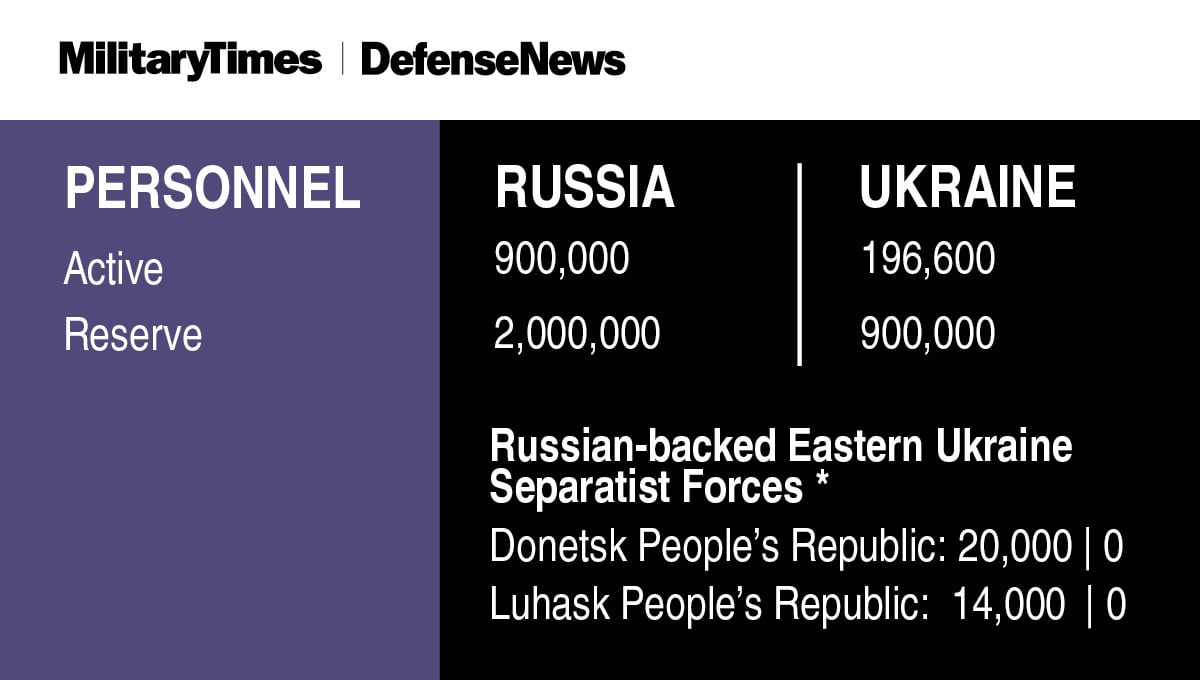
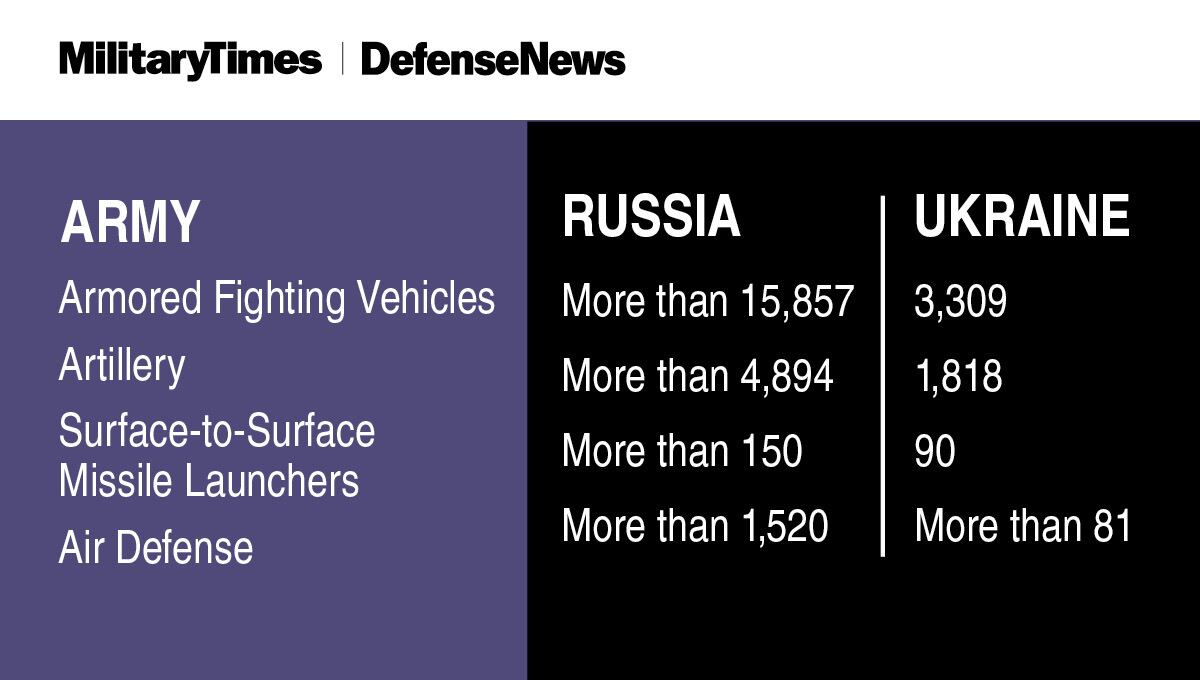
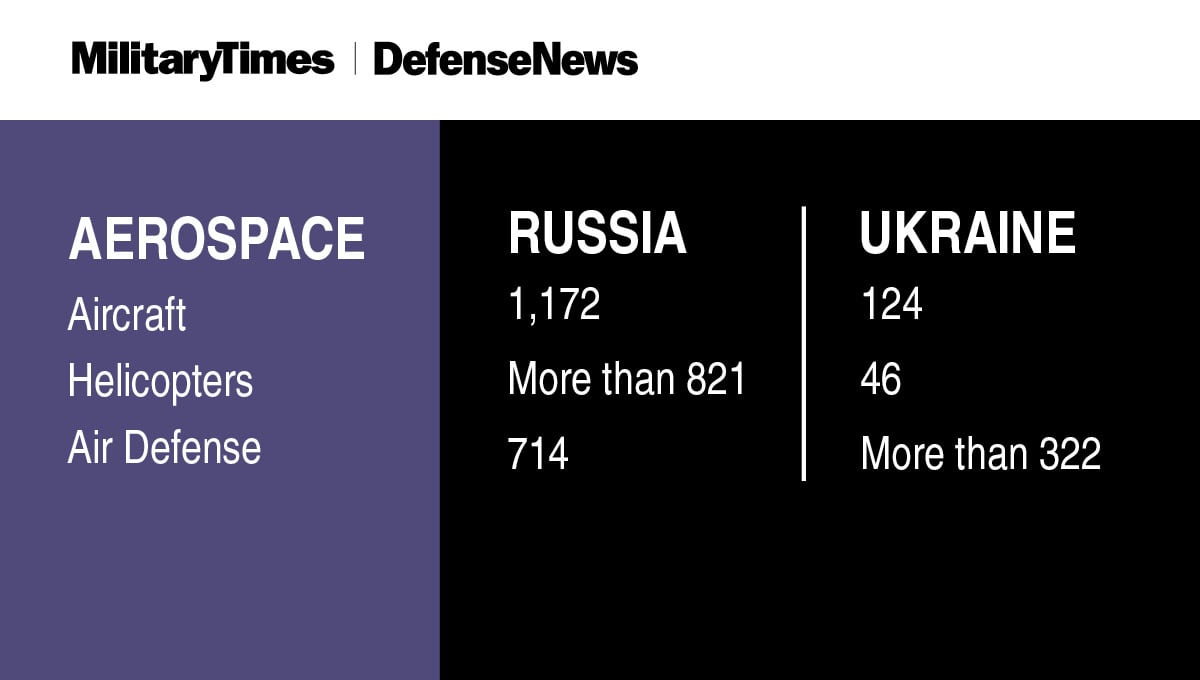
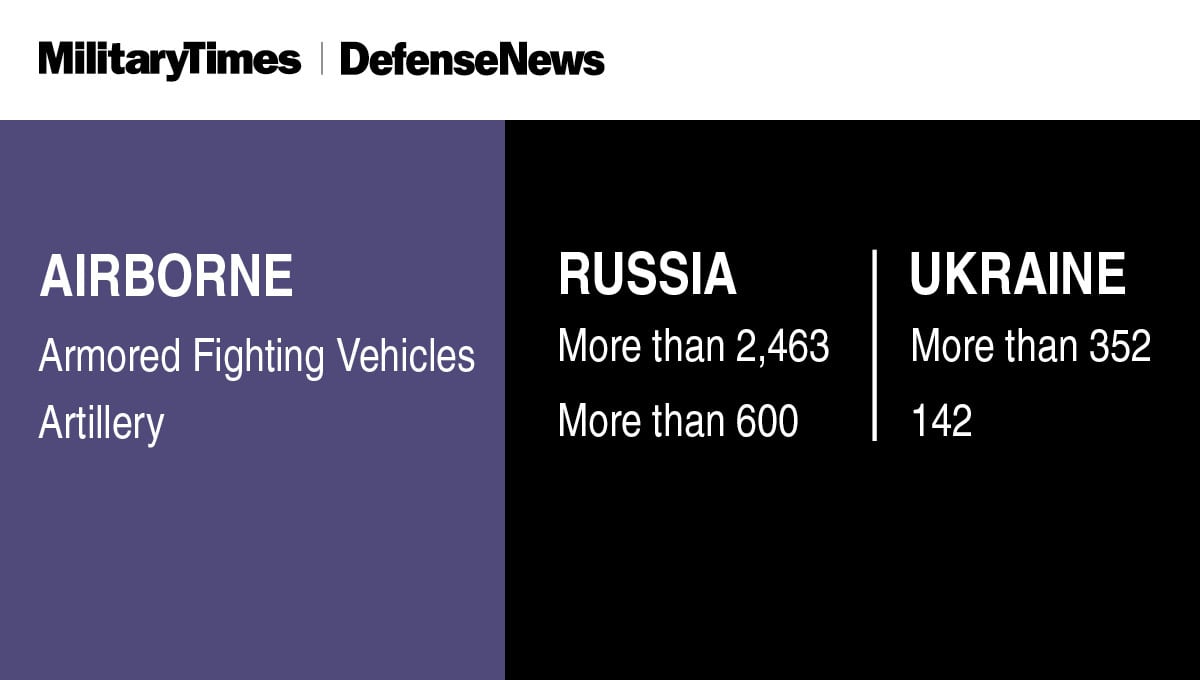
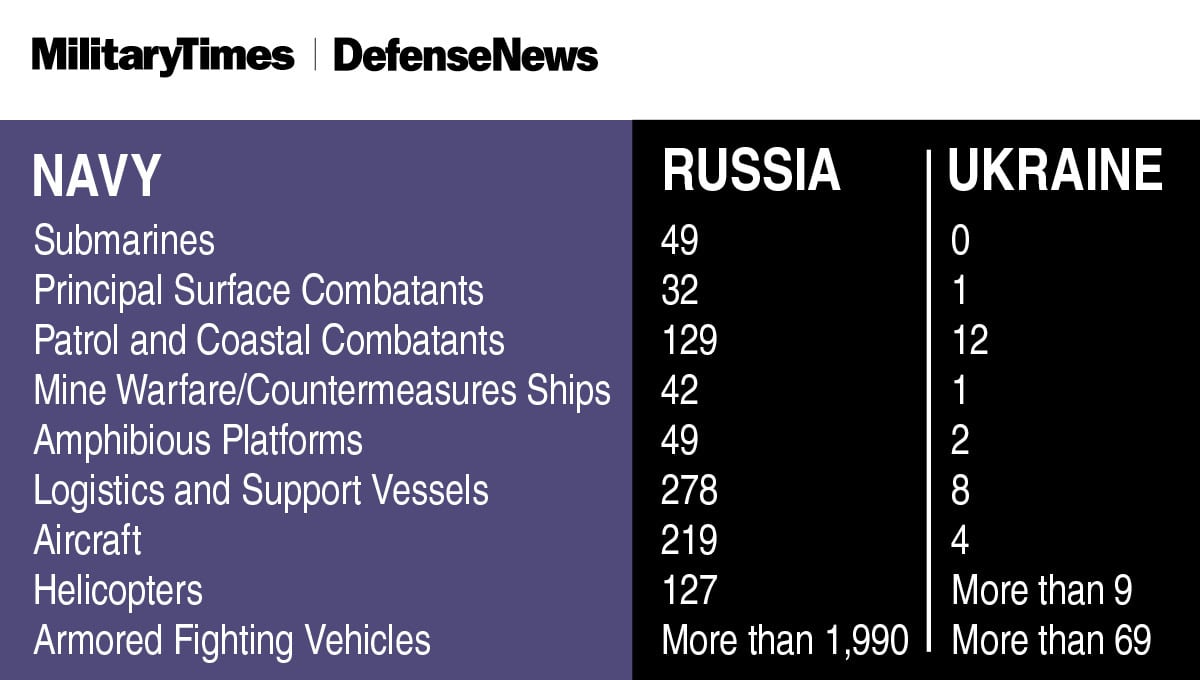
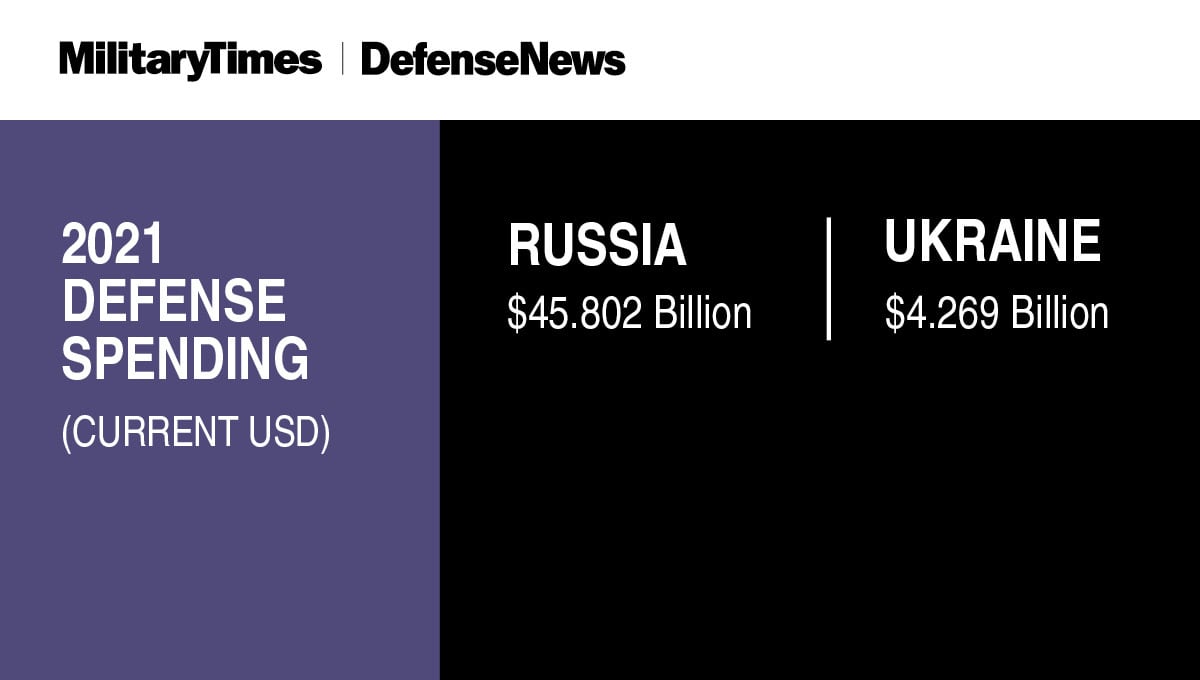
- Data as of November 2021.
- Armored Fighting Vehicles are armored combat vehicles with a combat weight of at least 6 metric tons.
- Artillery are weapons (including guns, howitzers, multiple-rocket launchers and mortars) with a caliber greater than 100mm for artillery pieces and 80mm and above for mortars, capable of engaging ground targets with indirect fire.
- Surface-to-Surface Missile Launchers are vehicles for transporting and firing surface-to-surface ballistic and cruise missiles.
- Air Defense includes guns, directed-energy weapons and surface-to-air missile launchers designed to engage fixed-wing, rotary-wing and unmanned aircraft. Systems primarily intended to intercept missiles rather than aircraft are excluded.
Chris Martin is the managing editor for Defense News. His interests include Sino-U.S. affairs, cybersecurity, foreign policy and his yorkie Willow.




